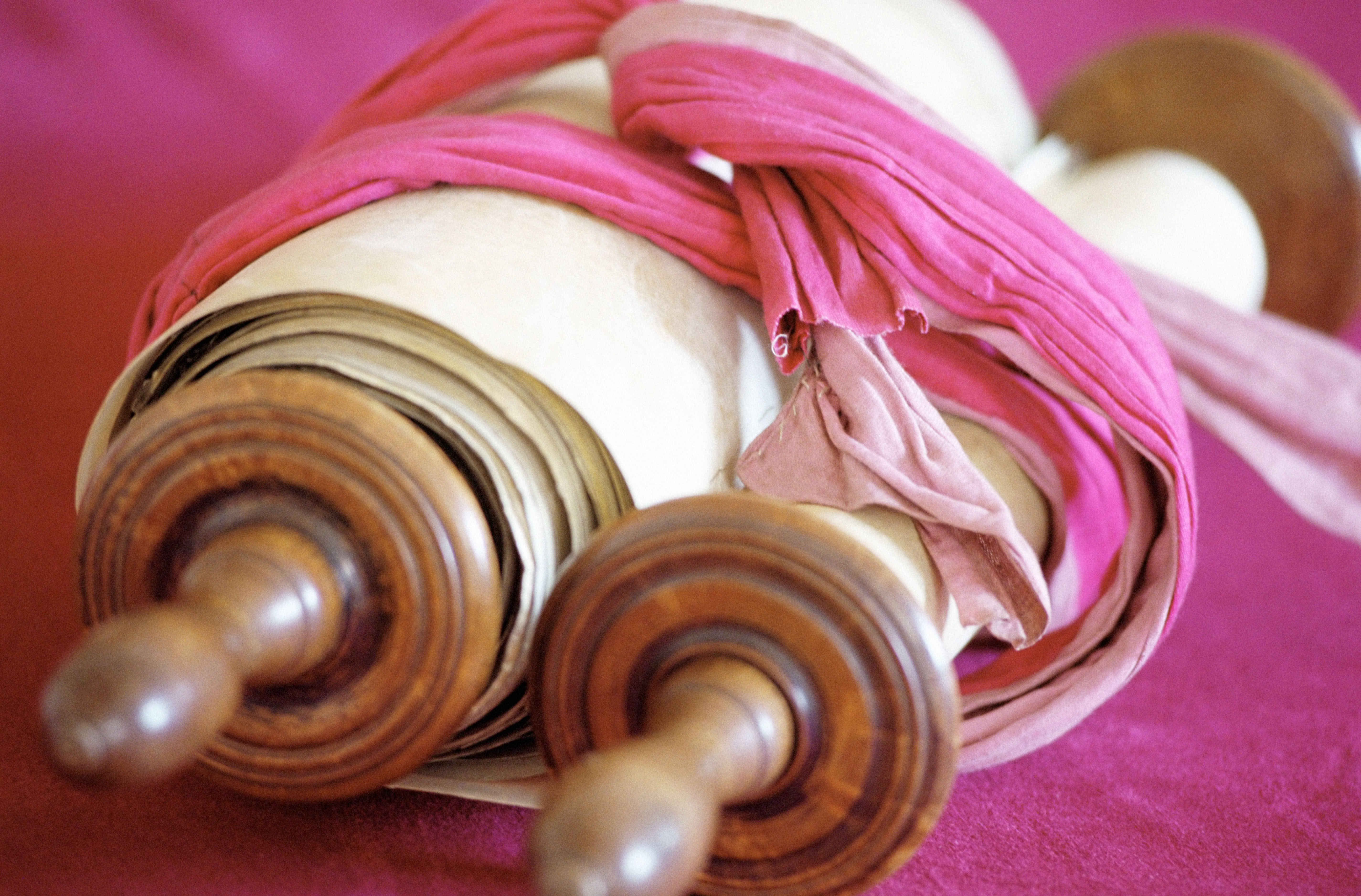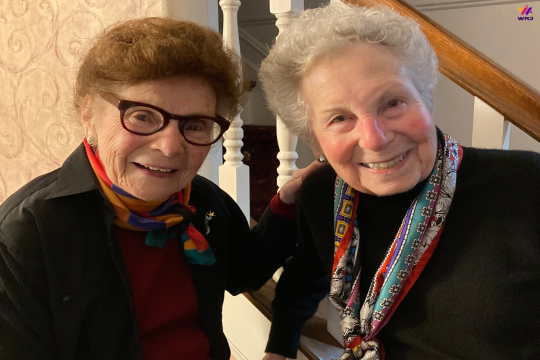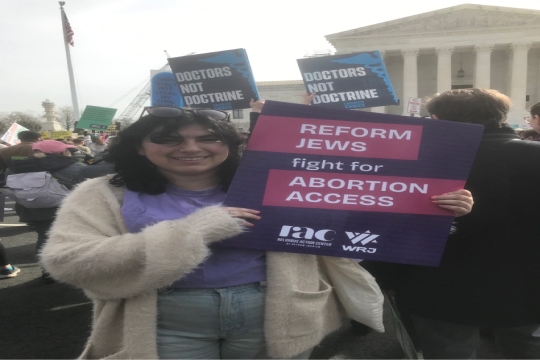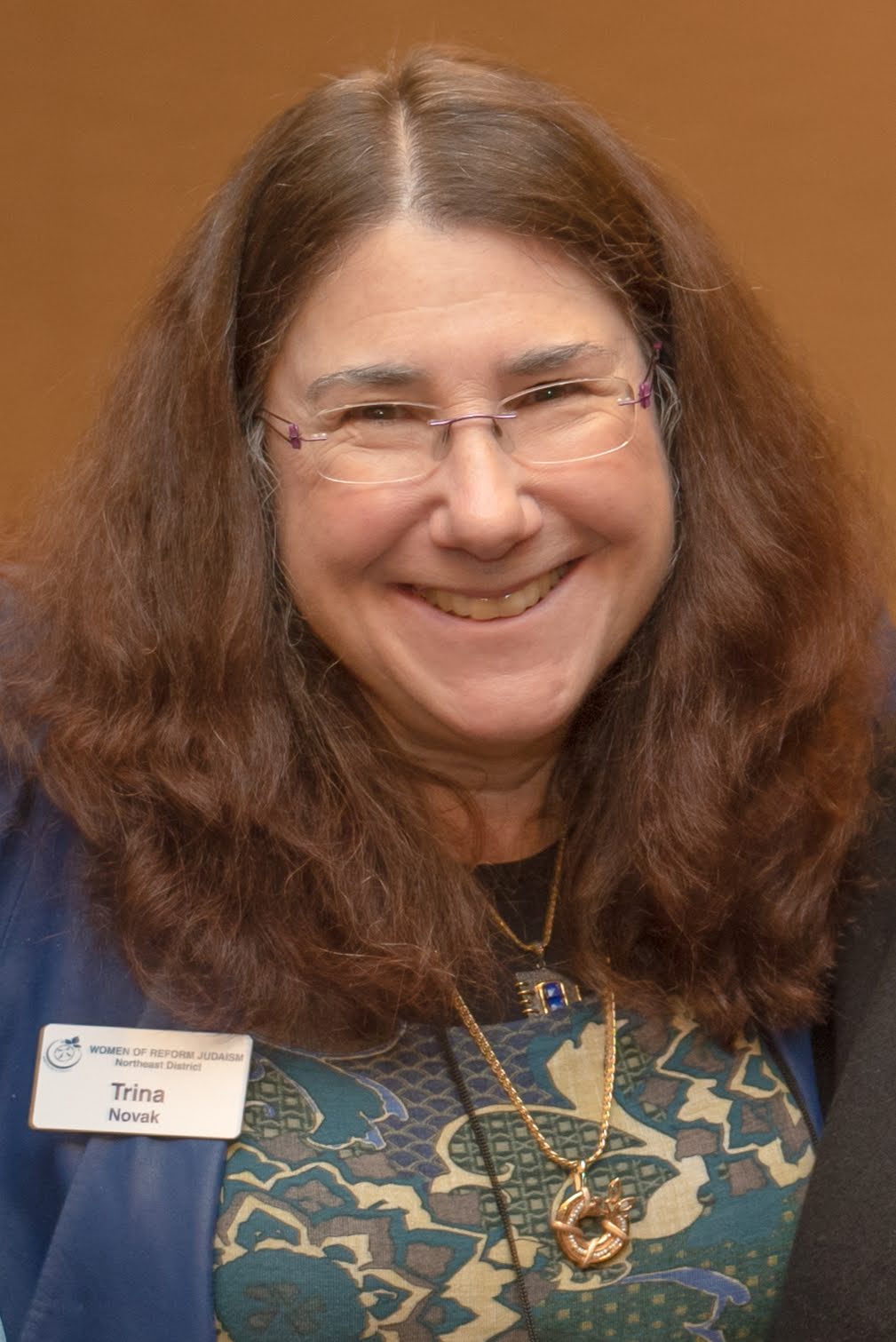
In 1997, WRJ undertook two major projects meant to enhance and magnify the concept of spirituality for our women. The Torah: A Women’s Commentary is the combined effort of scholars and contributors from a variety of fields, who have created a Torah commentary written by women, elevating women’s voices and points of view. Torat Nashim is the Torah WRJ commissioned, which is used at live WRJ conferences. Sisterhoods and districts can inquire about borrowing the WRJ Torah for special occasions.
The Torat Nashim scroll and the sofer (scribe) selected by WRJ, traveled around North America from 1997-2001. WRJ women and associates were able to participate in the mitzvah of writing a new Torah, which is the 613th commandment. My spouse and I both participated in this mitzvah. Imagine being elated and nervous at the same time! My handwriting is barely legible, and the last thing I wanted was to botch the beautiful calligraphy. Guided by the sofer’s steady and reassuring hand, I was able to write several letters on the scroll. The project was completed in 2001 in a beautiful Siyum ceremony. I was honored to chant from the WRJ Torah during the 2010 WRJ Northeast District convention and at a WRJ conference.
Scribes pray with their hands, not only by replicating the letters and words that have been passed down to us but also by artfully producing the script. Parashah B’reishit begins with the letter Bet, which, when written, is closed on three sides and open on the fourth side. This opening leads to the rest of Torah. It truly is a beginning with endless possible ways to interpret the content of what comes after. Even the first word, when viewed without vowels (B’rsht,) could be up for interpretation. We can translate the Hebrew to “In the beginning,” “In a beginning,” or “At the beginning {of God’s creating}.” There are a variety of translations and interpretations available.
Being an orderly person, I am drawn to Genesis, Chapter 1. God eliminates chaos, provides separation to make space and maximize potential, and begins the creation process. Each day brings something new, each with its own unique value to sustain life. As plants and animals are created, they are given the opportunity to reproduce and preserve life into the future. God views creation as good. Even the creation of humans is first viewed in an orderly and balanced fashion. Being created in the image of God, human potential is viewed as very good. The Garden of Eden is an idyllic setting. Everything is provided, and creation waits for nothing.
Yet as the first humans mature, the desire to have choices over decisions increases. The motivation to obtain knowledge and have a say over their future potential overrides God’s edict to refrain from eating the fruit of the Tree of Knowledge of Good and Bad. We know what happens next – humans are evicted from the Garden and have to determine their potential future on their own. Given their newly attained knowledge, will they be able to make choices that lead to a future filled with life and the ability to weather the ups and downs life brings? Or, will they make choices that lead to self-destruction and a bleak future? Before Parashah B’reishit comes to a close we get a glimpse of both scenarios.
We have just spent the month of Elul in introspection thinking about our life journeys and evaluating what has been good, what can be improved upon, and what could be eliminated. We spent the High Holy Days asking forgiveness for missing the mark, going through the process of t’shuvah, and giving thanks for the bounty in our lives. As we spiral toward a new reading of the Torah cycle, we have the opportunity to fully take advantage of a new beginning. Tamara Cohn Eskenazi, Ph.D., co-editor of The Torah, A Women’s Commentary, wrote:
“Journeying beyond the garden, the first humans transmit to us the memory of how we are meant to be: joyous, equal partners in work and play, in a wholesome relationship with God, earth, nature, and our human counterparts. Since these gifts of life no longer come on a silver platter, Parashat B’reishit invites us to renew them. As the cycle of Torah reading begins again, so too our lives resume a journey of regeneration, restoring our delicate yet resilient connection with God, nature and one another.”
Sisterhood, Spirituality, and Social Good – WRJ offers us the networks and the tools to connect, enhance, and elevate the spark within each of us. Here’s to new beginnings that bring out the best in all of us and allow us to move forward, together, into the sacred future.
Trina Novak is the Immediate Past President of Women of Reform Judaism Northeast District and a WRJ Board member. She currently serves as the co-chair of the Education to Action Committee. She is a past sisterhood president and member of the Sisterhood of Temple Beth Shalom in Needham, MA.
Related Posts

Celebrating 100 Years: A Journey Through Time
Celebrating the Mothers of Israel: A Women’s Seder


